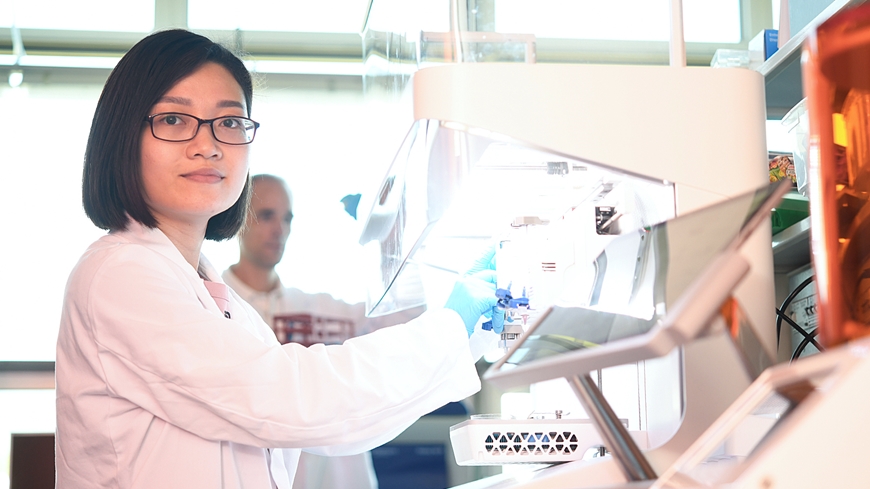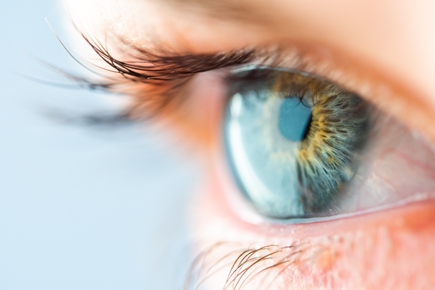Cornea from the 3D printer
Invisible implant for clear vision
Damage to the cornea affects millions of people worldwide. Empa researchers are working on a transparent, biocompatible implant from the 3D printer. This allows defects to be repaired seamlessly and permanently. The project could now be started thanks to a generous donation from a foundation.

Like a windowpane, the transparent cornea, is the outermost layer of tissue that protects our eyes. If this 500 to 600 micrometer-thin tissue is damaged by infections, injuries or malformations, vision impairment or even blindness can occur. Millions of people worldwide are affected by corneal damage, but only around 100,000 of them each year can be treated with a corneal transplant. The reason: Demand for donated tissue is significantly higher than its availability.
A team of researchers from Empa, the University of Zurich, the Zurich Veterinary Hospital and Radboud University in the Netherlands is therefore developing a self-adhesive implant that is not dependent on tissue donations and does not cause a rejection reaction. “The basis for the implant is a biocompatible hydrogel made of collagen and hyaluronic acid,” says Markus Rottmar from Empa's Biointerfaces lab in St. Gallen.
Artificial cornea supports healing

The transparent implant also contains additives to ensure optimum biomechanical stability. The artificial cornea will be produced by 3D printing. “3D extrusion bioprinting makes it possible to tailor the implant to the patient's individual corneal curvature,” says Rottmar.
In a later step, the researchers will load the hydrogel with human stem cells from the eye so that the artificial cornea can support tissue regeneration. And because the self-adhesive transplant does not require surgical sutures, longer operating times and post-operative complications such as infection, scarring or inflammation can also be avoided.
Private support that makes a difference
The project was fully financed thanks to a generous donation from a foundation. Empa's Zukunftsfonds raises private third-party funds for such pioneering research projects that are not yet supported otherwise. Would you also like to give our research an additional boost? Further information including a link to our donation form can be found at www.empa.ch/web/zukunftsfonds .
-
Share






